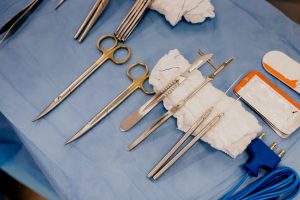Medical equipment plays a crucial role within healthcare facilities, acting as essential tools for healthcare providers in their efforts to treat patients. However, alongside this role comes the potential for exposure to bodily fluids, bacteria, and pathogens, creating opportunities for the spread of healthcare-associated infections. Consequently, maintaining the cleanliness and disinfection of medical equipment is a pivotal step in ensuring the health and safety of both patients and healthcare professionals.
The Importance of Cleaning Medical Equipment
The significance of cleaning medical equipment is underscored by several key factors:
Patient Safety: Clean medical equipment helps mitigate the risk of patients being exposed to bacteria and pathogens, reducing the potential for the spread of healthcare-associated infections.
Infection Prevention: Medical equipment that comes into contact with blood, bodily fluids, and other potential sources of infection can harbor bacteria. Regular cleaning is instrumental in preventing the occurrence of healthcare-associated infections.
Prolonged Lifespan: Keeping medical equipment clean prevents the buildup of residues like blood and contaminants on the equipment's surfaces, thus minimizing corrosion and damage and extending the equipment's lifespan.

The Role of Medical Equipment in Healthcare Facilities
Medical equipment assumes an indispensable role within healthcare facilities, encompassing diagnostic, therapeutic, and monitoring functions. For instance, electrocardiogram machines monitor heart function, surgical instruments aid in surgeries, and ventilators provide respiratory support. However, these instruments are also prone to contamination during use, emphasizing the criticality of maintaining their cleanliness.
Standards and Challenges of Cleaning Medical Equipment
Cleaning medical equipment is a complex and meticulous task that necessitates adherence to a set of standards and operational procedures. This may include:
Appropriate Disinfection Methods: Choosing suitable disinfection methods—such as high-temperature steam sterilization or chemical disinfection—based on the type and intended use of the equipment.
Regular Maintenance: Regular maintenance of equipment is essential to ensure its performance and safety.
Nevertheless, cleaning medical equipment also poses challenges, including complexities in operation and the investment of time and resources. Consequently, some healthcare facilities are introducing smart cleaning devices to enhance cleaning efficiency and quality.
The cleanliness of medical equipment is not only integral to patient health and safety but also reflects the reputation of healthcare facilities and the ethical standards of healthcare professionals. By implementing standardized cleaning processes and employing appropriate disinfection methods, we can effectively mitigate the risk of healthcare-associated infections and ensure a safe and hygienic medical environment.